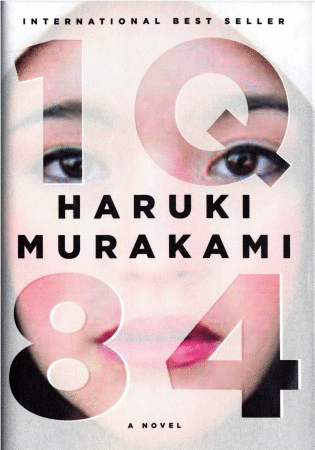 A few years ago, I was told that I should read Haruki Murakami’s books. And I started with one that was on sale at my local shop — Kafka on the Shore. I was completely blown away by Murakami’s work. Since then, I’ve read a number of his books — Norwegian Wood, The Wind-Up Bird Chronicle, Sputnik Sweetheart, Hard Boiled Wonderland and the End of the World, and his latest work, which has been called his magnum opus, 1Q84.
A few years ago, I was told that I should read Haruki Murakami’s books. And I started with one that was on sale at my local shop — Kafka on the Shore. I was completely blown away by Murakami’s work. Since then, I’ve read a number of his books — Norwegian Wood, The Wind-Up Bird Chronicle, Sputnik Sweetheart, Hard Boiled Wonderland and the End of the World, and his latest work, which has been called his magnum opus, 1Q84.
The story takes place in the year 1984 and centers on two characters in their thirties. On one side, we have Aomame, a solitary woman with a lonely past who works as a fitness instructor and occasional assassin of men who abuse their wives or girlfriends. On the other, we have Tengo, a solitary man with a lonely past who teaches math three days a week at a cram school and works on his writing in his spare time. At the start of the book, Tengo is reviewing literary submissions for a new writer award and he stumbles upon a fantastic story called Air Chrysalis by a seventeen-year-old girl named Fuka-Eri. He tries to convince his editor, Komatsu, to move it to the top of the pile but while Komatsu likes the story, he doesn’t like the writing style. He comes up with a plan for Tengo to rewrite Fuka-Eri’s novel in secret and Tengo reluctantly agrees after he meets the strange young girl himself. Meanwhile, Aomame is discovering that there are strange events in the world, such as newsworthy events she has no memory of and two moons in the sky. She says she believes she’s in a new world, which she christens 1Q84, the Q standing for a question (in Japanese, this is also a play on the pronunciation, since the Japanese word for nine has the same pronunciation as the letter Q). Aomame is asked by the elderly woman she commits assassinations for to kill the leader of a religious organization called Sakigake, the same organization which the mysterious Fuka-Eri’s parents had once been affiliated with.
I’m going to stop right there with the recap. Suffice to say, the stories of Aomame and Tengo are closely connected. The book alternates chapters between the two of them, until book three when a third character, Ushikawa, is added into the mix. Although some criticized Murakami use of third-person narration (he typically uses first-person), I actually enjoyed that aspect of it. Aomame and Tengo are both two great characters and I really loved their stories.
However, by book three the story really starts to drag. Not a whole lot seems to happen in that section, and I get the feeling that Murakami was just spinning his wheels and trying to pad out the end. The prime example of this is with the character of Ushikawa. When he’s first introduced, it’s obvious he’s a creepy guy who’s not to be trusted. But when Ushikawa becomes one of the major characters in book three, this point is relentlessly hammered into our heads. Every chapter that centers on Ushikawa repeats that he’s ugly and unlikable, as if we’ve forgotten about it since the last time it was mentioned two chapters earlier. While he has some important contributions to the story, we did not need so much of a focus on this guy and Murakami could have excised a lot of useless material from these chapters.
And that’s really the major weakness of the book, what stops it from being truly great. The story just overstays its welcome in book three.
That’s not to say there’s not a lot of good. Even a not-great Murakami novel is better than the best work of lesser authors. But be prepared for some monotony towards the end.
